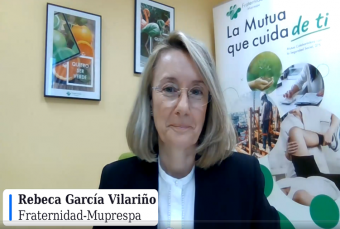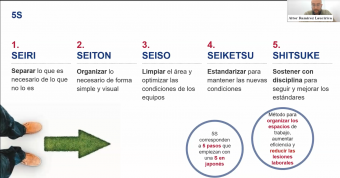
5S: pillar of Vision Zero in the X Prevention Week of Fraternidad-Muprespa
This Tuesday, Fraternidad-Muprespa held the webinar "5S as a tool for people's safety", which was attended by Aitor Ramirez, Senior Principal at Kaizen Institute Western Europe, who focused on this Japanese methodology as a driver of cultural change in favor of security.
The Kaizen Institute is the first global consultancy to promote the Kaizen philosophy outside of Japan. It was founded by Masaaki Imai, considered the father of the method and expert in business optimization.
It is a day in line with the Vision Zero philosophy and that the Mutual Collaborator with Social Security has organized within the scope of its X Prevention Week, which annually takes place around April 28, World Day for Safety and Health at Work. The motto chosen this year is “If everything is in its place, accidents have no place”, which highlights the importance of systematization in organizations as a source of security, referring to the fourth golden rule of Vision Zero "Ensure safe and healthy systems".
Rebeca García Vilariño, Area Head of the Department of Prevention and Health Culture, introduced the day and He gave some examples of how to guarantee safe and healthy systems: having good organization, order and cleanliness in the workplace, clear safety standards and involving the entire workforce in these actions through fluid communication since “small steps like these will generate safe and healthy systems,” he assured.
Ramirez explained the intrinsic connection between 5S and the principles of Vision Zero, especially its focus on prevention through people's commitment and participation and broke down how the five stages, classification (Seiri), order (Seiton), cleaning (Seiso), standardization (Seiketsu) and discipline (Shitsuke), They transcend the mere physical organization to directly influence the mentality and practices of workers, fundamental pillars to achieve the ideal that all workplace accidents become preventable.
He also described this methodology as an authentic "cultural transformer" within organizations and stressed the importance of the keys to its successful implementation: a commitment on the part of management as a starting point, the formation of a support group that acts as a driving force and disseminator of the initiative, and an active and transversal involvement of all the people who are part of the company.
The need for meticulous planning, the convenience of starting with a pilot project to measure the impact and learn from the process, and constant and transparent communication to keep everyone informed and motivated were other key points that he outlined in the webinar.




